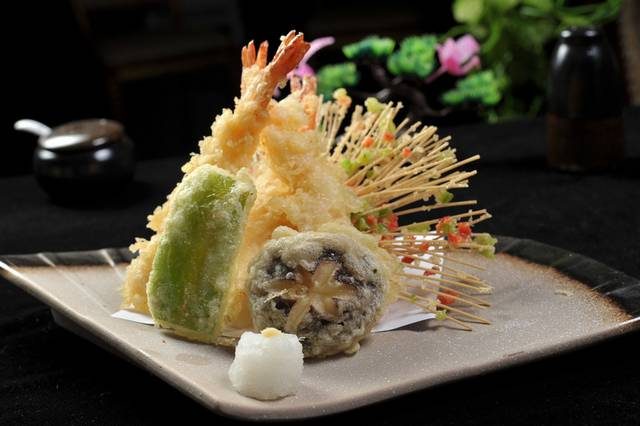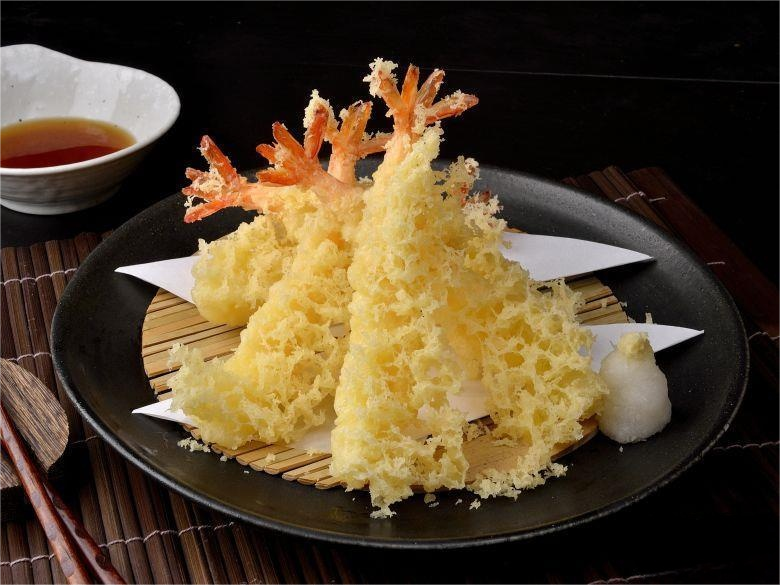Tempura could arguably be the most traditional of Japanese cuisines (just think of it like the roll in all-you-can-eat Japanese food scene) – lighter, and crispy on the outside juicy with tender inside. Tempura is the dish of light crispy crust and tender juicy filling and the secret to tempura making is tempura powder that is used for its special taste and appearance. Tempura powder in Japanese restaurants process seems usually as the following steps:
Step 1 Prepare the ingredients
Tempura has to choose the ingredients before making it. A few common made ingredients: shrimps, squid pumpkin eggplant bell pepper, etc. Ingredients are very important because using fresh ingredients will affect the final taste and flavour of cooking. If shrimp for example, you should get sea fresh shrimp and devein/shuck the shrimp to have the tail for presentation after frying. Moderate sized vegetables to ensure that even heating of the fry.
Step 2 Dry powder
Dry powder is done to the food before they get coated. Dry powder permits the ingredients to mix more with tempura paste. For starters, if you put the ingredients right into your tempura slurry they may end up not sticking on some components or worse falling off the slurry on surface. E.G on ingredients with smooth surface, both vegetable or seafood and the dry powder can bridge those slight gaps enhancing tempura paste sticking. The dry powder absorbs extra moisture from the surface thus the tempura paste will not be diluted and the taste of the tempura will still be sweet.
Step 3 Make batter
Tempura powder—Important part of tempura creation. If so, take a clean container and pour the tempura powder there, add equal number of ice water that is stated on your package. For a cool batter (do not want the shell cook to fast due to heat in frying), use ice water to keep batter cold. Avoid stiffening the batter, stir with chopsticks until the mixture is thoroughly combined but not over do it. An ideal batter should be very thin and even a little gritty, which makes the outside of temp perfect thinly crispy.
Step 4 Apply batter
Begin to incorporate the prepared ingredients into batter, ensuring everything is fully coated. The ingredients in the batter will lightly be shaken to remove the excess one from batters while coating the fried tempura shell can help it look crispy. For sticky ones e.g. pumpkin slice, lightly tap the tempura powder dry layer on top of surface of the ingredient before dipping it in batter in order for the ingredients not to stick.
Step 5 Blast
Frying is crucial for making tempura, so keep the oil temperature between 170°C and 180°C for a crisp shell and properly cooked fillings. Gently drop the battered ingredients into the hot oil, avoiding overcrowding to maintain temperature. Use chopsticks to turn them for even cooking. Fry seafood like shrimp and squid for 1-2 minutes and vegetables for 2-3 minutes, removing them when they’re golden brown and crisp.
Step 6 Drain and plate
After frying the tempura, place it on a kitchen paper towel and gently press to soak up any excess grease. This step helps make the tempura feel lighter and healthier while enhancing its flavor. Once you’ve done that, arrange the tempura neatly on a plate and consider adding some lovely touches, like lemon slices or fresh herbs, to make it visually appealing. Finally, don’t forget to serve it with a tasty tempura dipping sauce for the full experience!
In Japanese restaurants, making tempura is truly both a culinary skill and a form of art. Every step, from choosing the freshest ingredients to mixing the batter and frying them just right, shows the chef’s dedication to quality and attention to detail. With its distinctive flavor and beautiful presentation, tempura has earned its place as a beloved classic in Japanese cuisine.
Contact
Beijing Shipuller Co., Ltd.
WhatsApp: +86 186 1150 4926
Web: https://www.yumartfood.com/
Post time: Apr-23-2025

